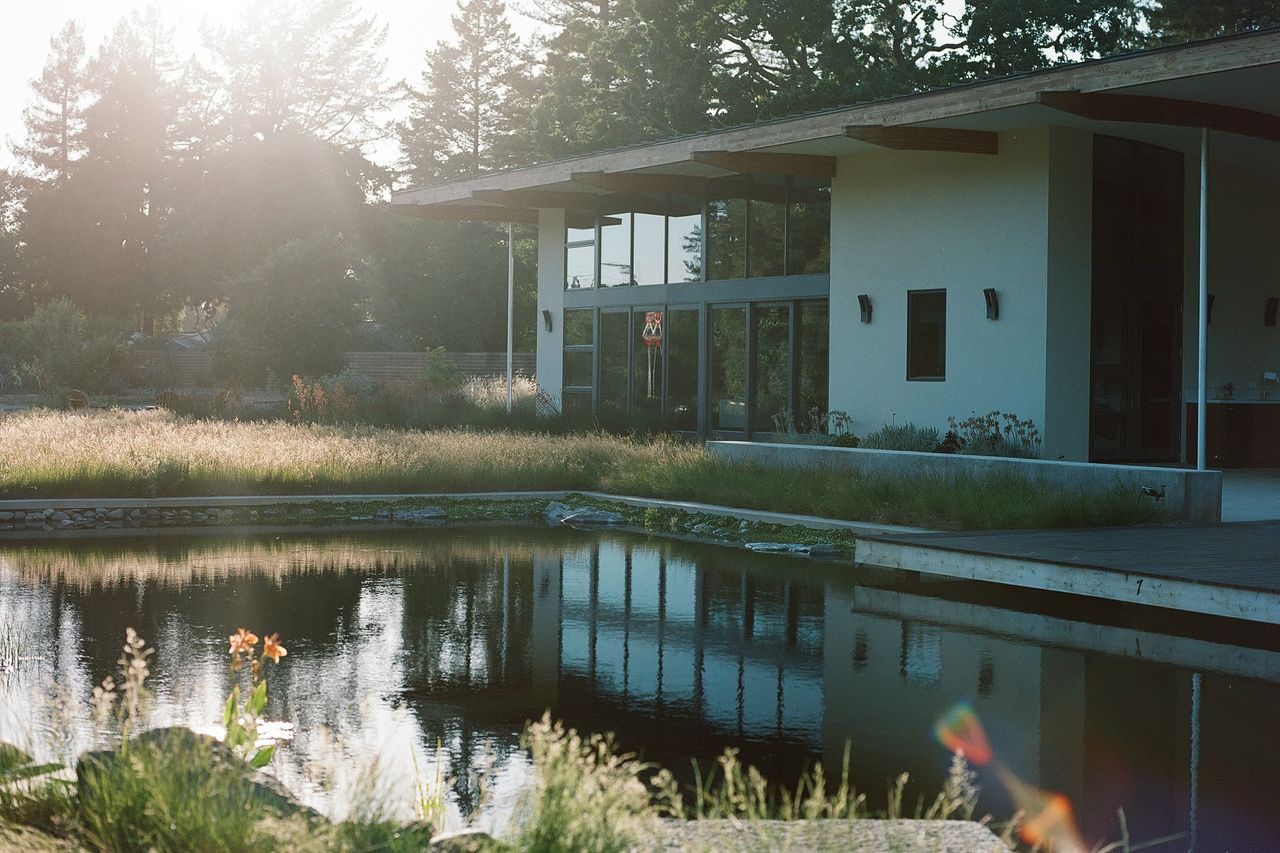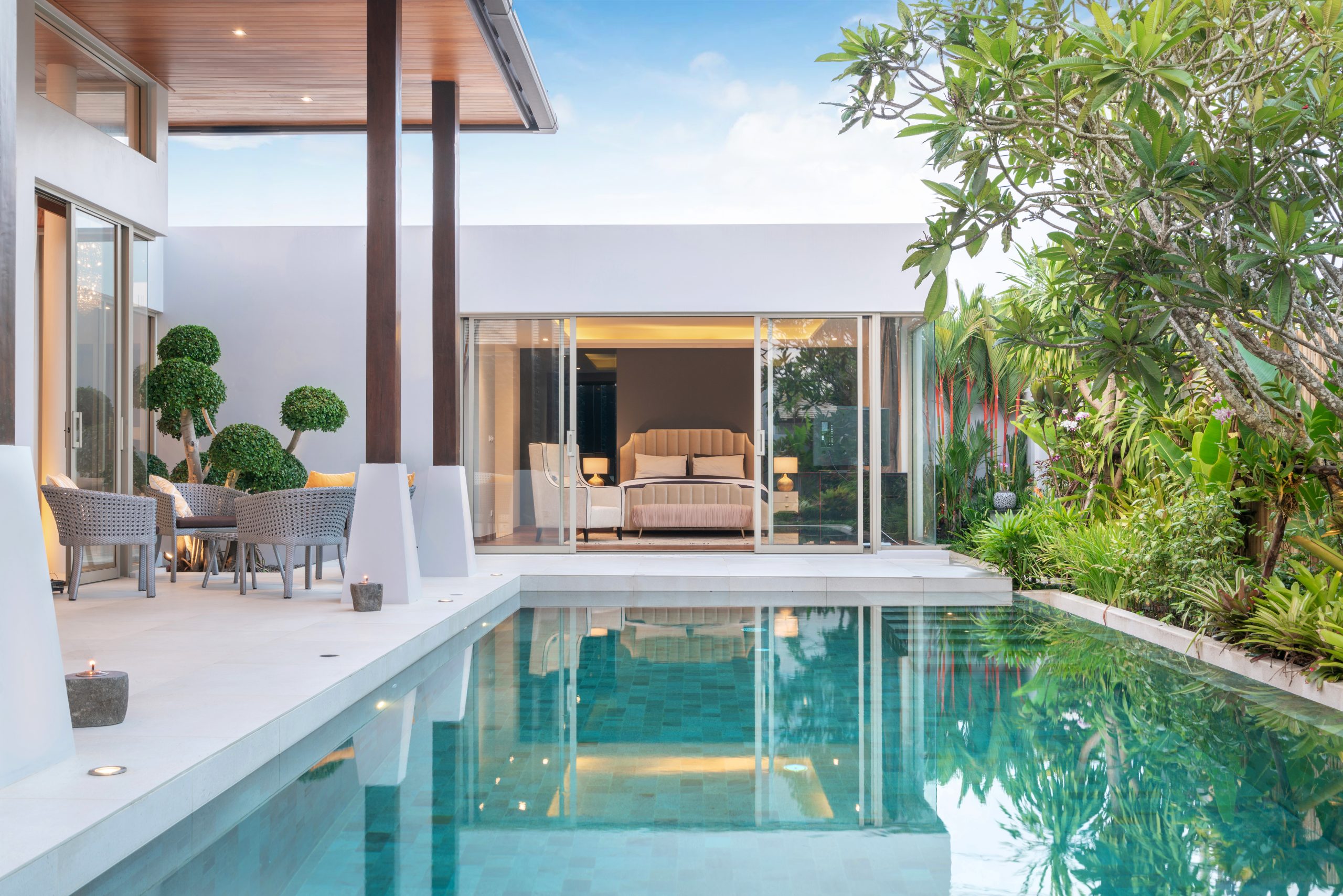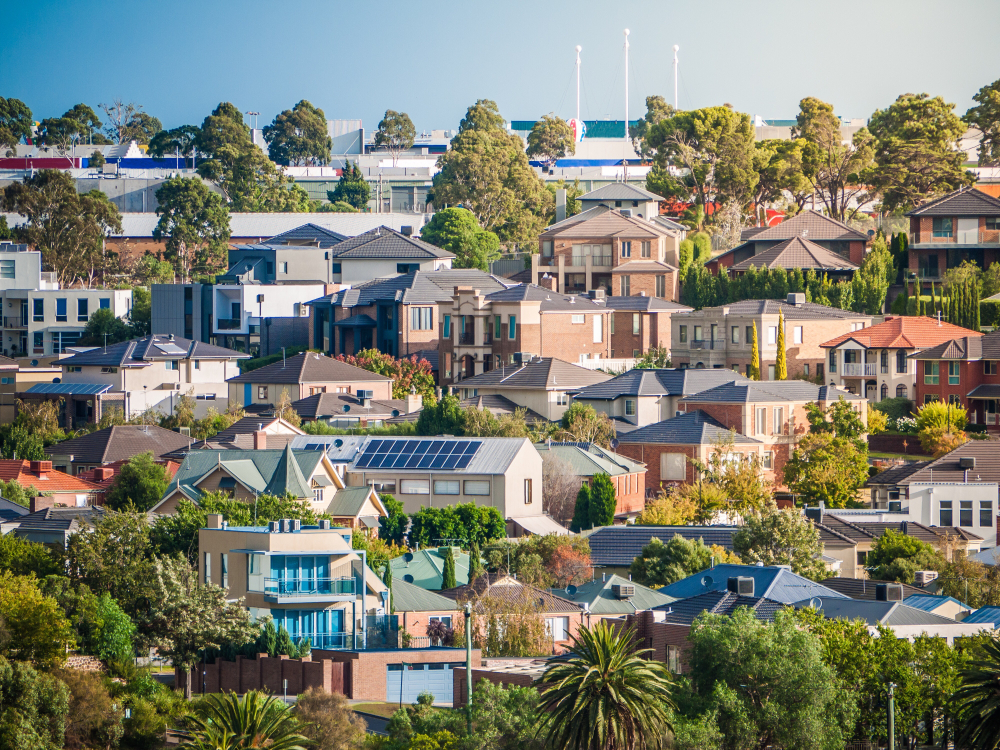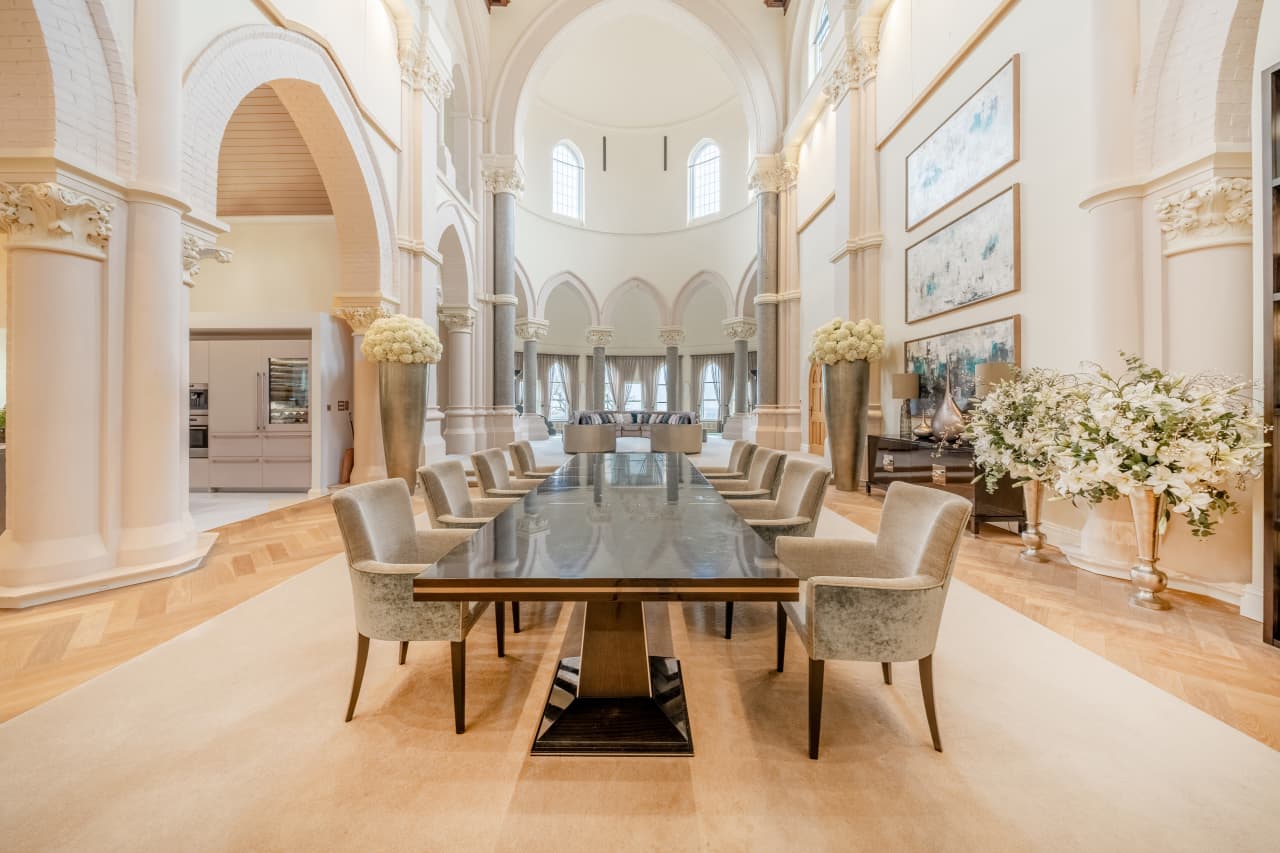Natural Pool-Owners Are Kissing Chlorine And Chemicals Goodbye
Homeowners are hopping from chemical-treated pools to greener alternatives.
This coming summer, some homeowners will be swimming in their backyard pools au naturel. The iconic, aqua-blue vessels of chlorine-treated water are starting to see competition from the leafy, greenish waters of natural pools.
Waiting lists for in-ground pools and a chlorine shortage are sparking interest in these so-called bio pools, which are chemical-free. Swimmers are invited to lounge, naiad-like, close to water mint and water lilies as dragonflies hover.
“Prices are going through the roof on chlorine tabs—if you can even find them,” says Christopher Paquette of Robin’s Nest, a natural-pool company in Buxton, Maine.
Natural pools are a tiny fraction of the U.S. residential pool market, which is dominated by pools that use chlorine and other chemicals to keep bacteria and microbes at bay. They are a sustainable choice, requiring less energy to operate.
The result is green water—somewhere between a mossy hue to a jade colour. The roots of aquatic plants, such as water lilies, and materials like gravel create a naturally occurring ecosystem with biofilms called a regeneration zone. Water is kept clean and algae-free as it recirculates over the film of micro-organisms. Newer technology replaces this regeneration zone with a smaller, self-contained, plantless biofilter, which uses material such as lava rock and gravel to build up a biofilm.
The appeal to homeowners is water free of chlorine and other chemicals that keep pool water bacteria-free. Natural pools cost about $125 a square foot, excluding decks, electrical and landscaping. That is about 10% more than installation costs for a chlorine pool. But they are slightly less expensive to maintain. A traditional 500-square-foot pool costs about $1,800 to $3,200 a year during a season, according to Home Advisor.
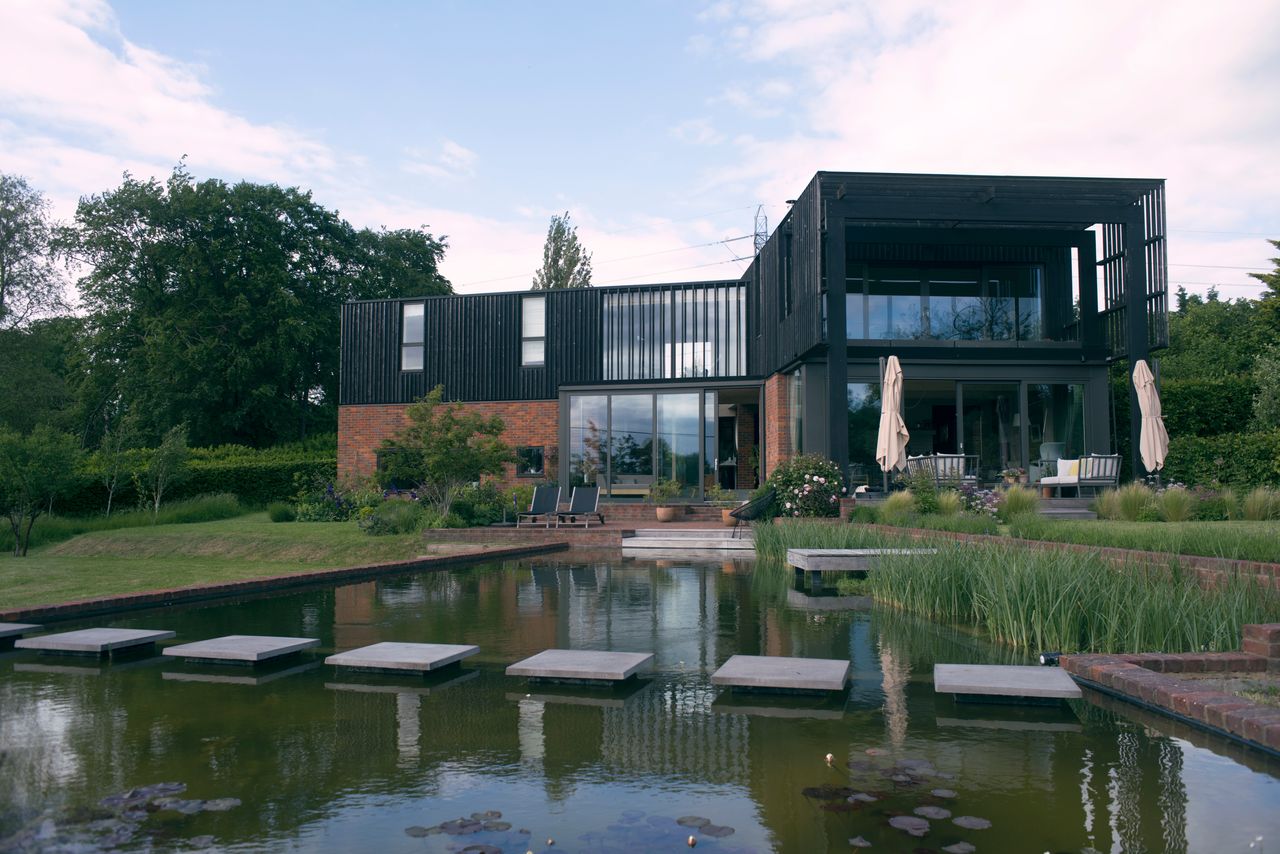
The energy costs for a natural pool are one-half to one-third of a traditional pool, from $35-$50 a month, and there are no chemical costs. Natural pools can be made of a rubber membrane or gunite, and pool sides may be lined with river rock or special sand bags. Ladders, heaters, and diving boards can be added, but pool covers aren’t needed and water doesn’t need to be drained annually.
Liz and Steve Magoun, tech entrepreneurs in Rye, N.H., installed a natural pool at their home, where the couple like to cool off after long bike rides.
It wasn’t their first choice. Chlorine pools are prohibited in their development, where they recently built a 5,000-square-foot, shingle-style house. The development also prohibits saltwater pools, which turn salt into chlorine.
“It’s like swimming in a crystal-clear pond with a wonderful greenish hue,” says Mrs. Magoun. She says she finds the pool water more sublime than the chlorinated water the couple had in the two previous pools they owned. She did, however, insist that the aesthetic be “neat and manicured,” hence the biofilter, which does the work of plants grown in regeneration zones.
“Like many in the outdoor home-improvement business, we’ve been slammed with demand because of the pandemic,” says Allen Schnaak, vice president of business development at BioNova Natural Pools in Chester, N.J., which supplied the biofilter for the Magouns’ pool.
Mick Hilleary, owner of Total Habitat, based in Kansas City, Kan., says he saw demand shoot up nearly 30% over the past year. He says he installed a natural pool in Tennessee for environmentalist and former Vice President Al Gore four years ago.
Most natural pools in the U.S. are based on the European style. In Europe, 16% of residential pools are natural, compared with less than 1% in the U.S. Europeans use regeneration zones—water gardens filled with aquatic plants and other natural materials—to purify the water. That zone is equal in size to the swimming zone and often separated by a submerged stone wall or a waterfall feature.
In the U.K., architects Emma and Spencer Guy recently installed a 38-by-18-foot natural pool in Buckinghamshire, about an hour from London.
“There is nothing better than a swallow dipping next to you to drink as you swim in clean, odorless, warm water,” says Ms. Guy, 46. The pool complements the 3,000-square-foot, net-zero-energy house they designed and built.
“We sited the pond to bounce light back into the house,” says Mr. Guy, 47. “We enjoy seeing dragonflies, newts, pond skaters and kingfishers. The increased wildlife is the main reason we installed a natural pool.”
Their 34,000-gallon, black, vinyl-lined pool cost $56,000—about half the price of a typical natural pool—because they supervised much of the work themselves. A natural-pool company supplied the water-circulation kit and the planting medium for the two plant-filled regeneration zones. The plants are embedded in soil imported from Italy overlaid with a membrane and gravel.
Another way to cut costs is to convert an existing pool to a natural one, which runs about $60,000,” says Michael George, head of the U.K.-based Gartenart’s U.S. division in Jaffrey, N.H.
Mike and Heather Dooley, both 60, of Napa, Calif., installed a 30-by-60-foot natural pool in 2019, with decking and a beachlike area, for about $160,000. It is integrated into the landscape, Mrs. Dooley says. “It mimics swimming in a creek; we didn’t want a sterile environment.”
Blue heron, mosquito-eating dragonflies and frogs frequent the poolscape.
Natural pools require about as much work as a traditional pool to maintain. “We have to cut back the plants in the regeneration zone for the winter, treat water with beneficial bacteria a few times a season, drain pipes, and vacuum the bottom and sides of our natural pool,” says Avery Pierce, 70, of Buxton, Maine, whose natural pool was installed in 2006, for $50,000, including a complicated excavation.
“It looks good four seasons out of the year,” her husband, Tom Lanucha, 63, adds, saying he believes it won’t detract from the value of their home, as chlorine pools can in the Northeast. “You can skate on it in the winter.”
Reprinted by permission of The Wall Street Journal, Copyright 2021 Dow Jones & Company. Inc. All Rights Reserved Worldwide. Original date of publication: June 23, 2021.
 Copyright 2020, Dow Jones & Company, Inc. All Rights Reserved Worldwide. LEARN MORE
Copyright 2020, Dow Jones & Company, Inc. All Rights Reserved Worldwide. LEARN MORE
This stylish family home combines a classic palette and finishes with a flexible floorplan
Just 55 minutes from Sydney, make this your creative getaway located in the majestic Hawkesbury region.
This may be contributing to continually rising weekly rents
There has been a substantial increase in the number of Australians earning high incomes who are renting their homes instead of owning them, and this may be another element contributing to higher market demand and continually rising rents, according to new research.
The portion of households with an annual income of $140,000 per year (in 2021 dollars), went from 8 percent of the private rental market in 1996 to 24 percent in 2021, according to research by the Australian Housing and Urban Research Institute (AHURI). The AHURI study highlights that longer-term declines in the rate of home ownership in Australia are likely the cause of this trend.
The biggest challenge this creates is the flow-on effect on lower-income households because they may face stronger competition for a limited supply of rental stock, and they also have less capacity to cope with rising rents that look likely to keep going up due to the entrenched undersupply.
The 2024 ANZ CoreLogic Housing Affordability Report notes that weekly rents have been rising strongly since the pandemic and are currently re-accelerating. “Nationally, annual rent growth has lifted from a recent low of 8.1 percent year-on-year in October 2023, to 8.6 percent year-on-year in March 2024,” according to the report. “The re-acceleration was particularly evident in house rents, where annual growth bottomed out at 6.8 percent in the year to September, and rose to 8.4 percent in the year to March 2024.”
Rents are also rising in markets that have experienced recent declines. “In Hobart, rent values saw a downturn of -6 percent between March and October 2023. Since bottoming out in October, rents have now moved 5 percent higher to the end of March, and are just 1 percent off the record highs in March 2023. The Canberra rental market was the only other capital city to see a decline in rents in recent years, where rent values fell -3.8 percent between June 2022 and September 2023. Since then, Canberra rents have risen 3.5 percent, and are 1 percent from the record high.”
The Productivity Commission’s review of the National Housing and Homelessness Agreement points out that high-income earners also have more capacity to relocate to cheaper markets when rents rise, which creates more competition for lower-income households competing for homes in those same areas.
ANZ CoreLogic notes that rents in lower-cost markets have risen the most in recent years, so much so that the portion of earnings that lower-income households have to dedicate to rent has reached a record high 54.3 percent. For middle-income households, it’s 32.2 percent and for high-income households, it’s just 22.9 percent. ‘Housing stress’ has long been defined as requiring more than 30 percent of income to put a roof over your head.
While some high-income households may aspire to own their own homes, rising property values have made that a difficult and long process given the years it takes to save a deposit. ANZ CoreLogic data shows it now takes a median 10.1 years in the capital cities and 9.9 years in regional areas to save a 20 percent deposit to buy a property.
It also takes 48.3 percent of income in the cities and 47.1 percent in the regions to cover mortgage repayments at today’s home loan interest rates, which is far greater than the portion of income required to service rents at a median 30.4 percent in cities and 33.3 percent in the regions.
Just 55 minutes from Sydney, make this your creative getaway located in the majestic Hawkesbury region.
This stylish family home combines a classic palette and finishes with a flexible floorplan









